Making these easy gochujang eggs is perfect for when you're short on time but still want a flavorful and protein-packed breakfast. This interesting and delicious way to use up gochujang is by far my favorite spicy breakfast recipe!
If you like recipes using gochujang, check out my simple gochujang sauce and my creamy gochujang pasta.
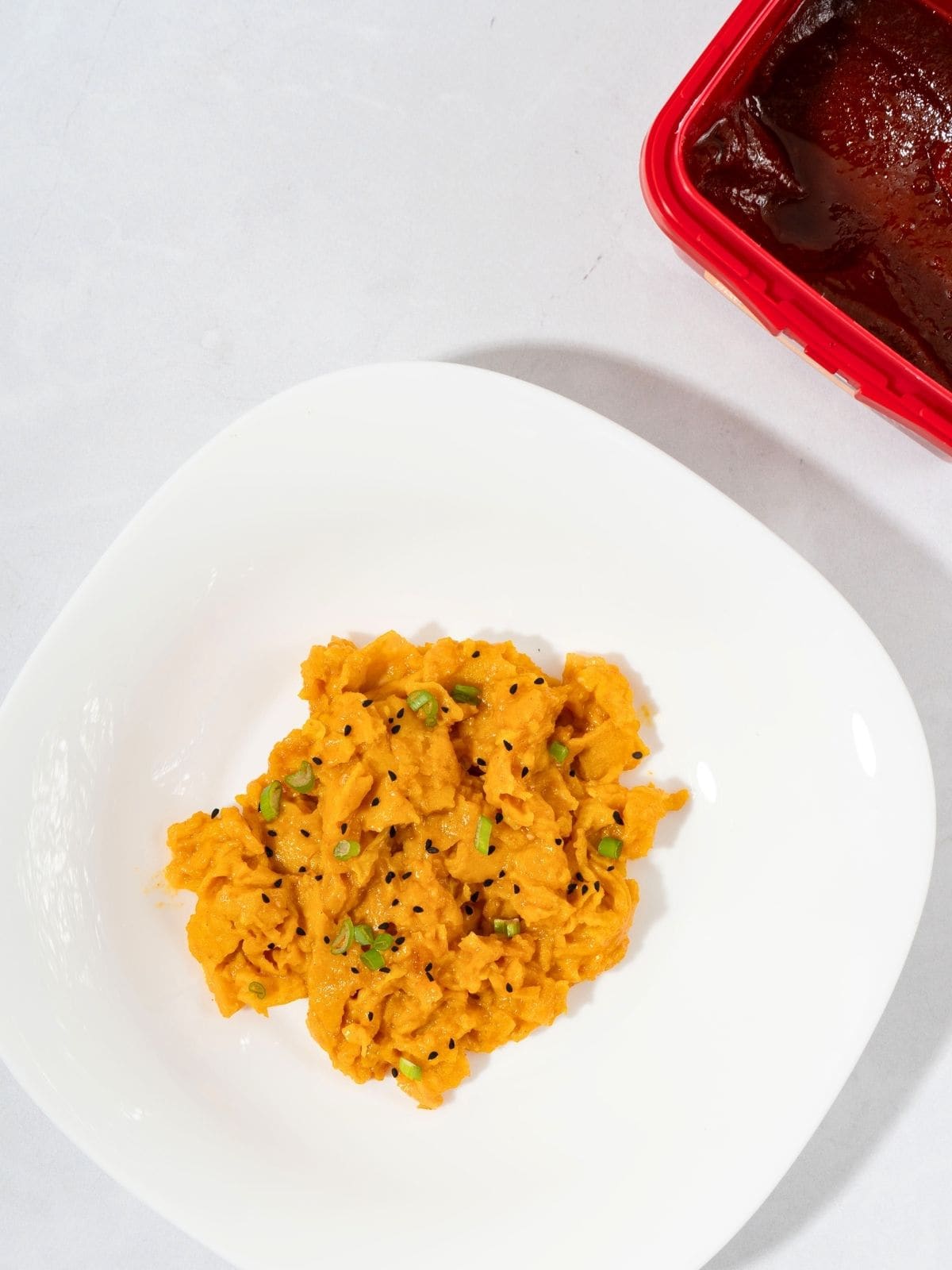
Jump to:
✔️ Why This Recipe is Great
Quick Go-To Recipe: Whether you're looking for a quick and easy weekday breakfast or a delicious weekend brunch option, these stovetop gochujang eggs will surely become a staple in your kitchen.
Great Side or Meal: Whether you make it for a Korean-style breakfast or as a healthy post-workout meal, this addition to your standard egg rotation will take your scrambie game to the next level. Plus, you can easily customize this to fit various dietary needs and preferences, even using liquid vegan eggs to make vegan gochujang eggs.
🍳 Ingredients
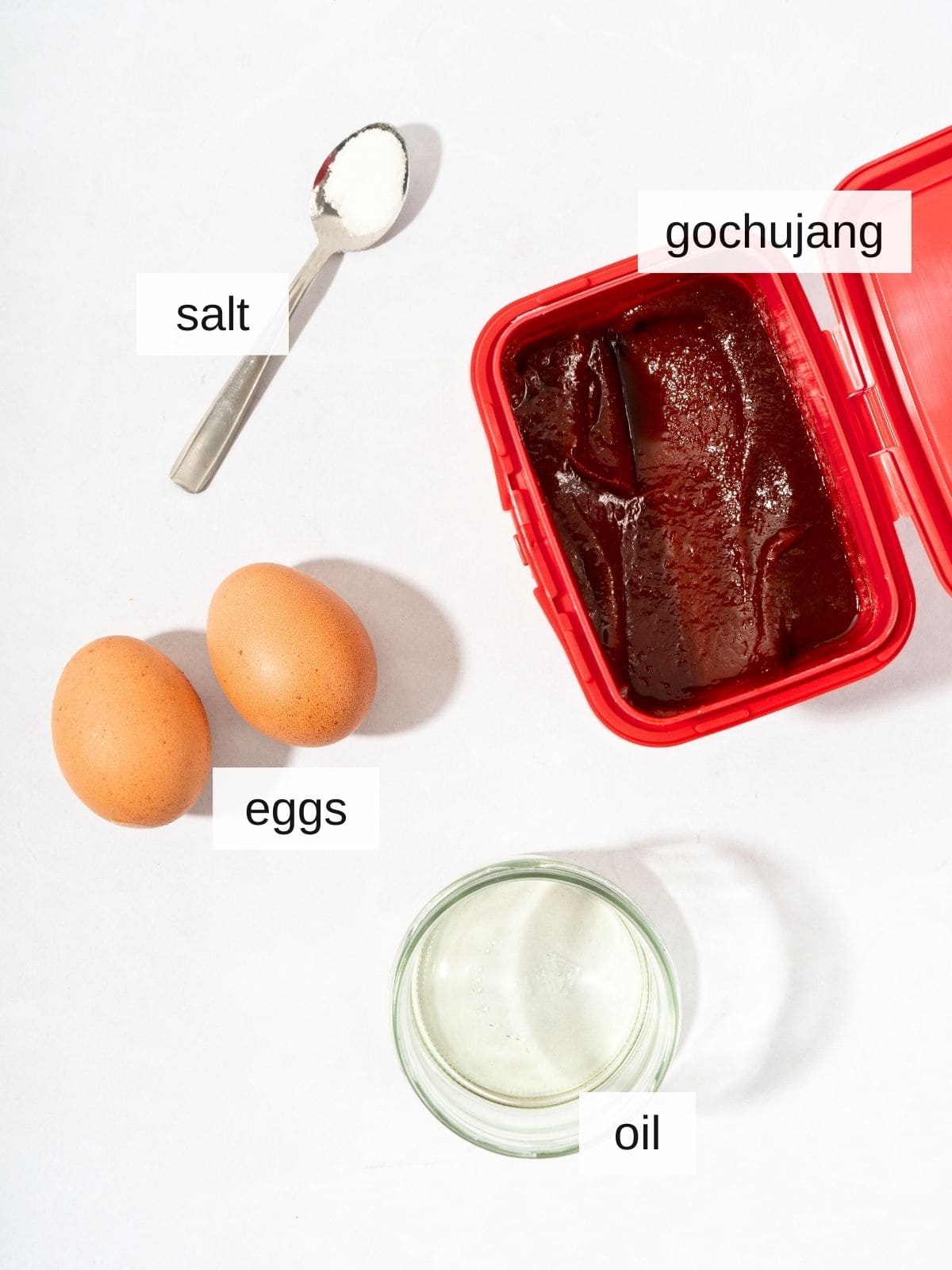
Large Eggs: Opt for large eggs as they provide the perfect balance of yolk and whites for this dish, though jumbo eggs would also work well.
Gochujang (Korean Hot Pepper Paste): this popular Korean condiment is made from red chili peppers, glutinous rice, fermented soybeans, and salt. Its unique spicy and sweet flavor adds depth to the eggs, and you can find it in most Asian grocery stores or online.
Vegetable Oil or Butter: If you prefer a more accessible option, you can use vegetable oil to cook gochujang eggs, however for a richer and more flavorful taste, I highly recommend using butter.
Salt: To enhance the flavors and balance out the sweetness from the gochujang.
See recipe card for exact ingredients and quantities.
🥣 How to Make This Recipe (Step-by-Step)
Step 1) In a medium bowl, crack the eggs and add the salt. Whisk together until the eggs are well beaten and a bit frothy (image 1).
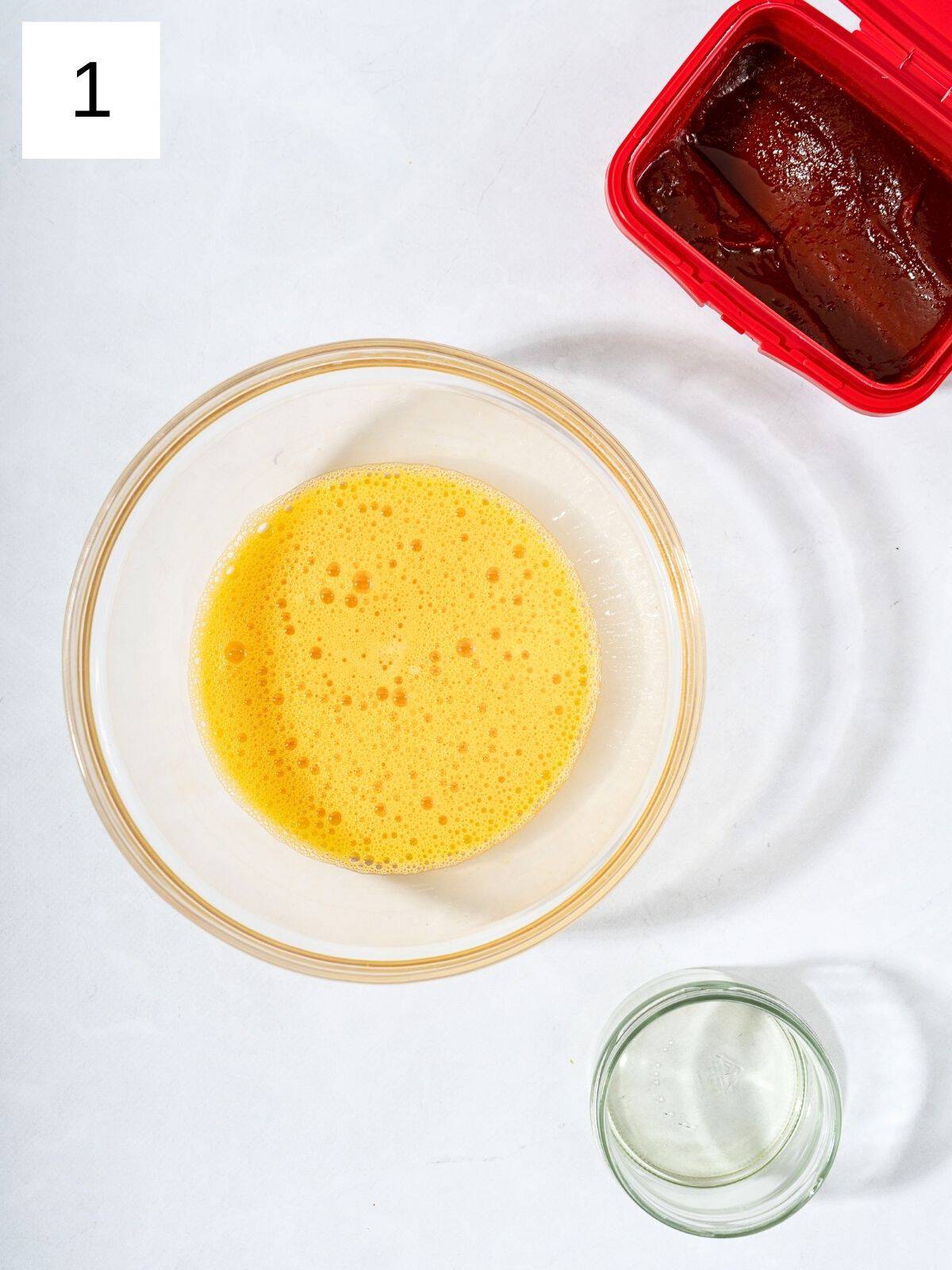
Step 2) Heat the vegetable oil or butter in a non-stick skillet over medium heat. Once the oil is hot or the butter is melted and foamy, reduce the heat to low and add the gochujang. Stir it around quickly for about 30 seconds to a minute, just until it becomes fragrant but not burnt.
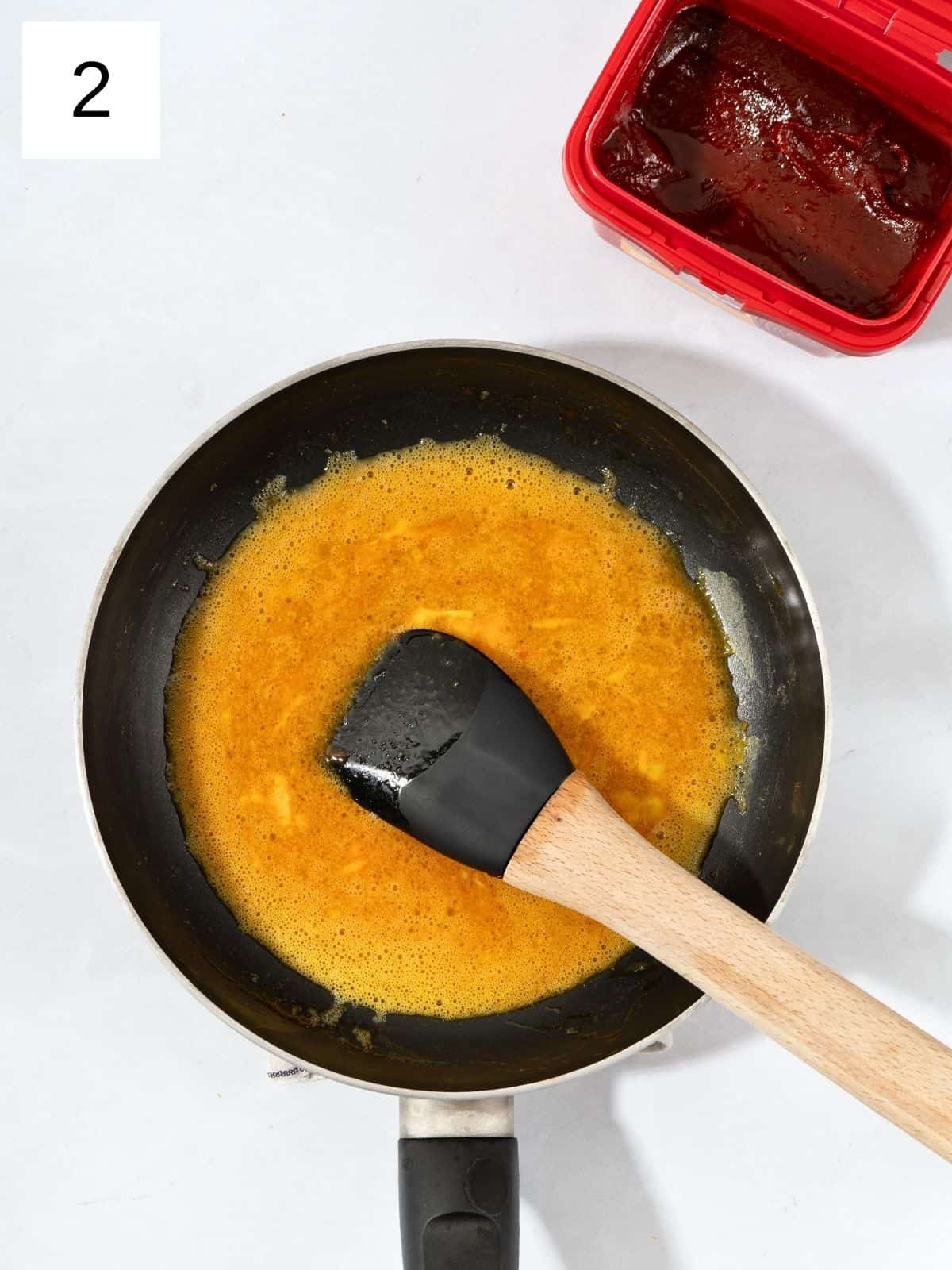
Step 3) Pour the beaten eggs into the skillet with the gochujang. Let them sit undisturbed for about 20 seconds, then start gently stirring with a spatula (image 2).
Continue to cook, stirring frequently, until the eggs are fully cooked but still soft and slightly runny in places, about 2-3 minutes for scrambled eggs. If you prefer fried eggs, let them cook until the whites are set and the yolks are done to your liking, flipping as desired for over-easy or over-hard eggs (image 3).
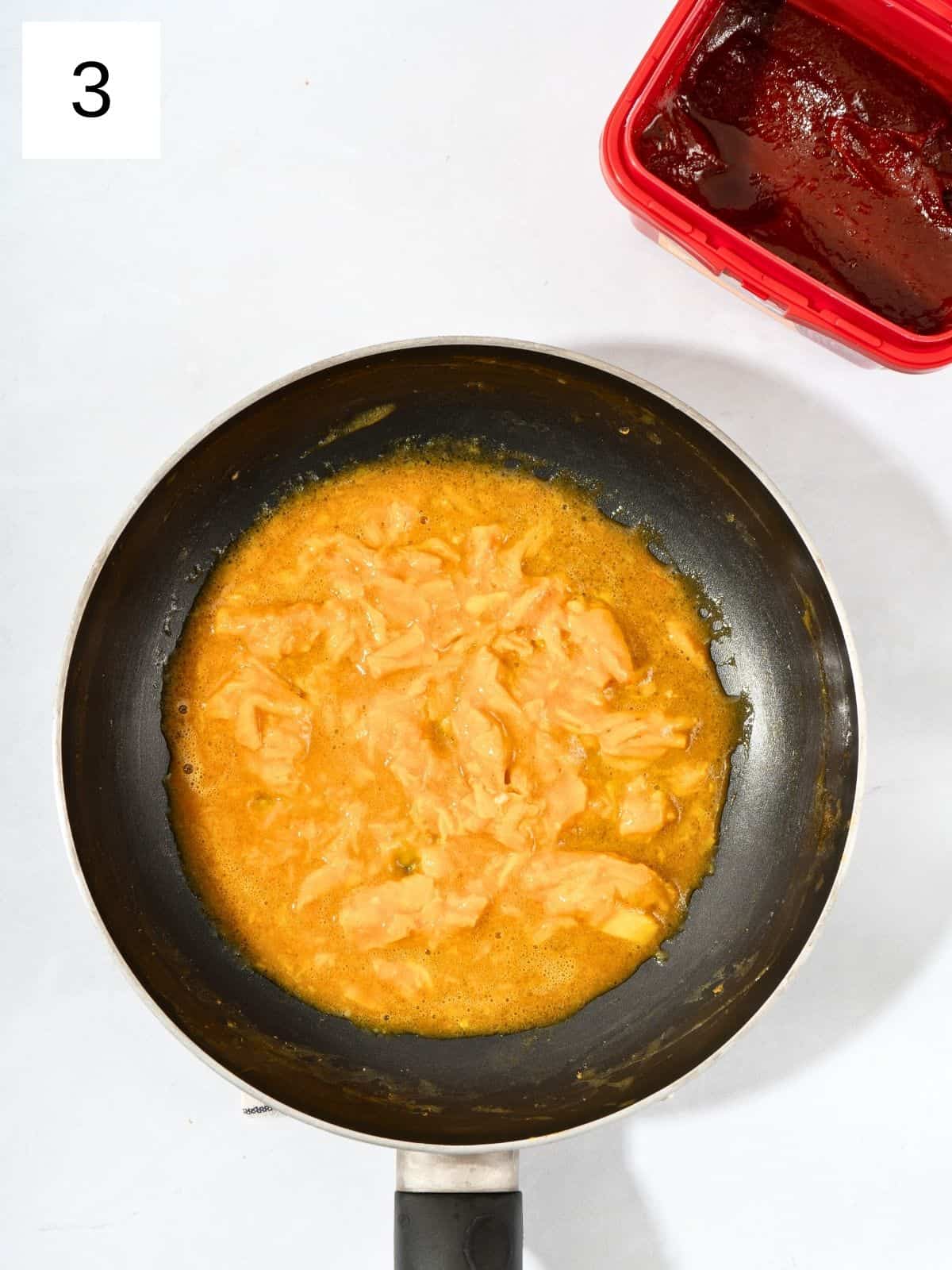
Step 4) Once the eggs are cooked to your preference, remove from the heat immediately to avoid overcooking (image 4). Serve the eggs hot, garnished with sliced green onions and sesame seeds if you like (image 5).
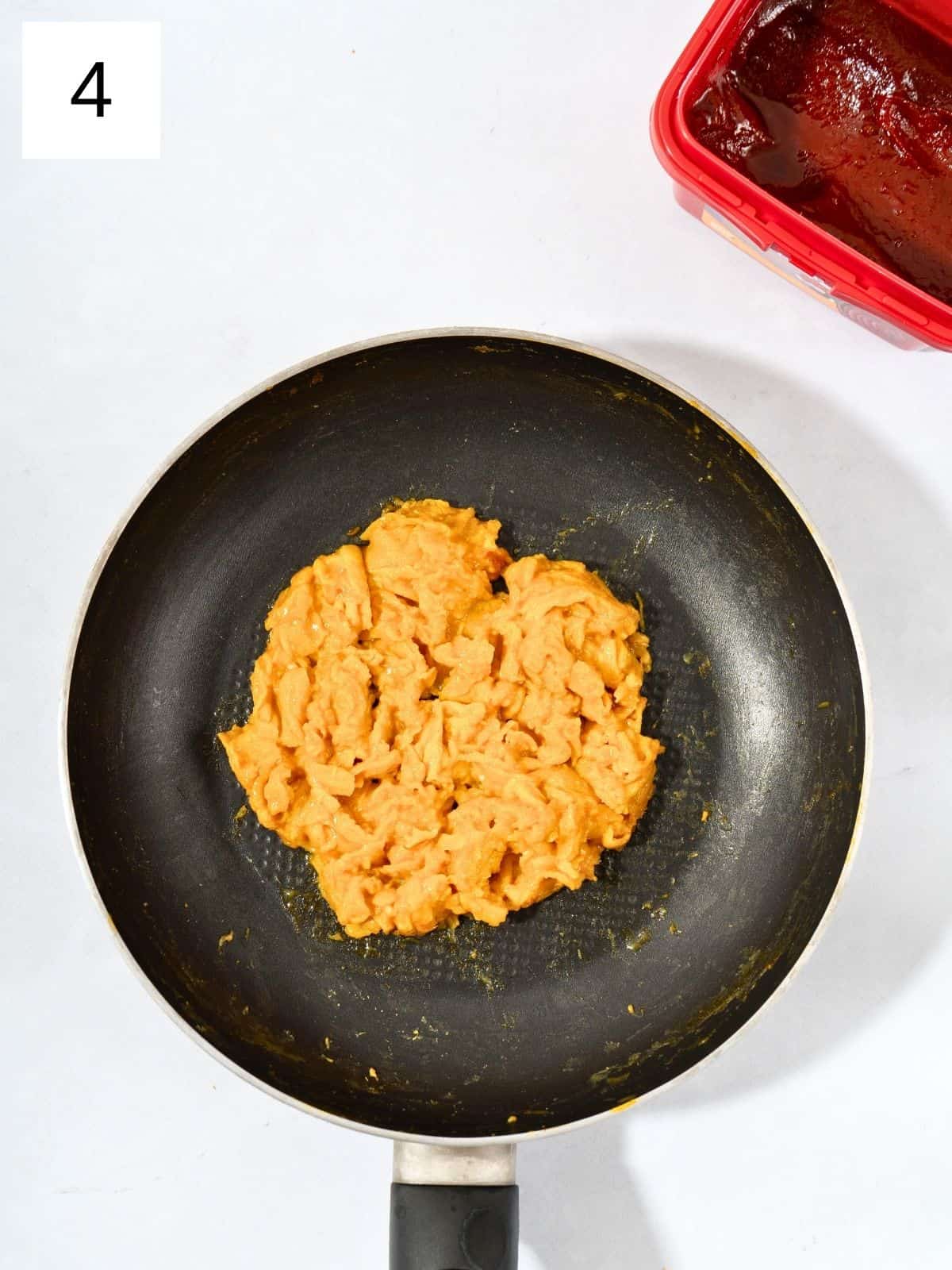
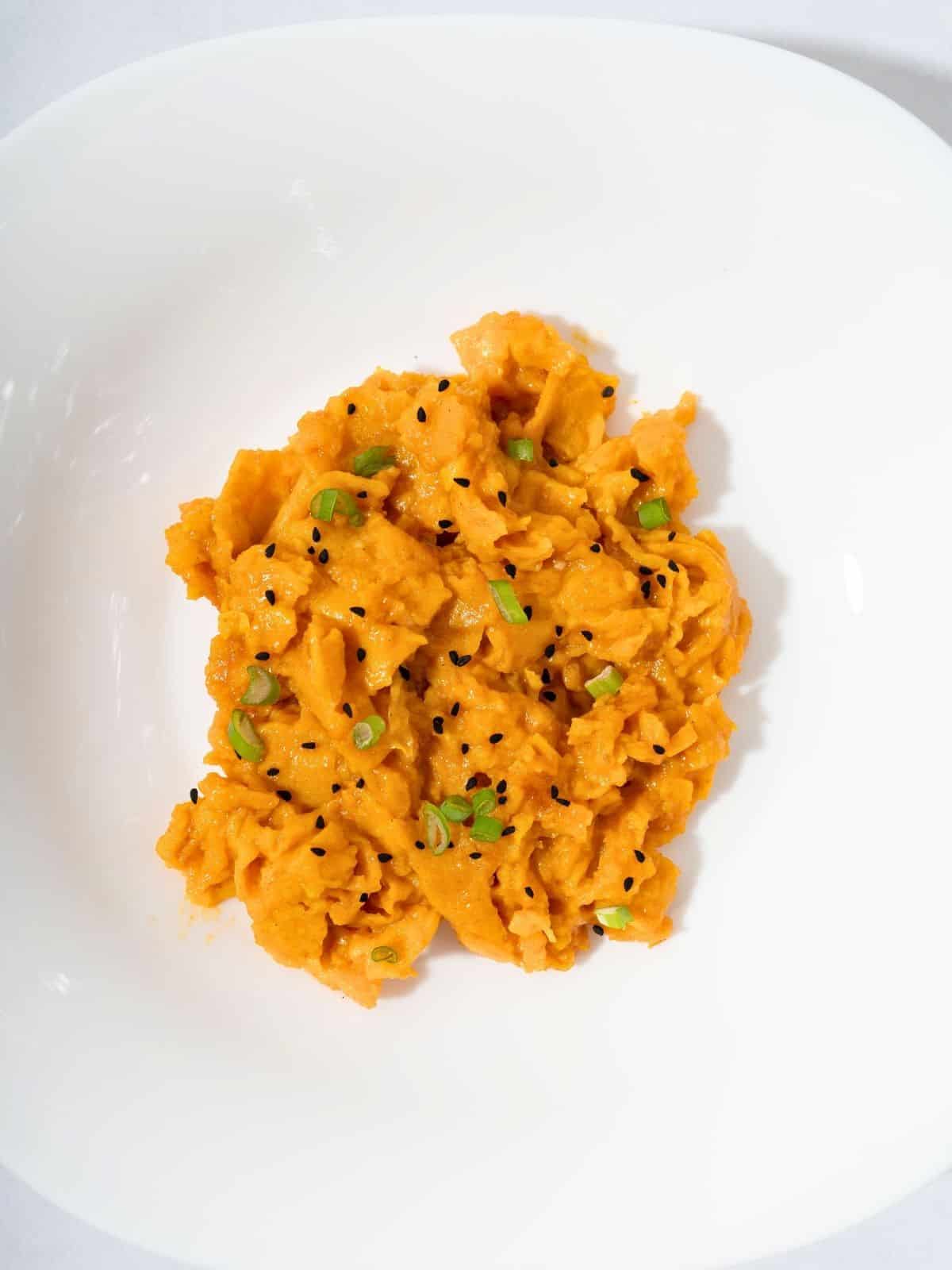
🌟 Variations
- Level of Spiciness - Gochujang can vary in heat level and sweetness, so feel free to adjust the amount to your taste preference, depending on what level of gochujang you buy.
- For Extra Spicy Lovers - For an extra kick, you can add a teaspoon of chili flakes or a splash of sesame oil to the gochujang mixture before swirling it in.
- Creamy Gojuchang Eggs: If you prefer a creamier texture, you can add a splash of milk or cream to the beaten eggs before cooking. You cna also add cheese on top at the end for extra creaminess.
See my gochujang compound butter for an alternative butter for cooking your gochujang eggs.
🥘 Storage and Reheating
These spicy scrambled eggs are best eaten fresh, but you can store any leftovers in an airtight container in the fridge for up to 3 days. To reheat, gently warm them up in the microwave or on the stovetop until heated through.
👨🏻🍳 Expert Notes & Tips
Temperature Control: Be sure to keep the heat low when adding the gochujang to avoid burning it, which can create a bitter flavor. For softer scrambled eggs, you won't want to go above medium heat, regardless.
Balancing Hot Spice: If you find gochujang too spicy, you can cut it with a little bit of honey or sugar to balance the heat with some sweetness.
Great Pairings: These spicy gochujang eggs are fantastic on their own, but they also make a great addition to a bowl of steamed rice, alongside some toasted bread, or even dolloped into a tortilla with some avocado.
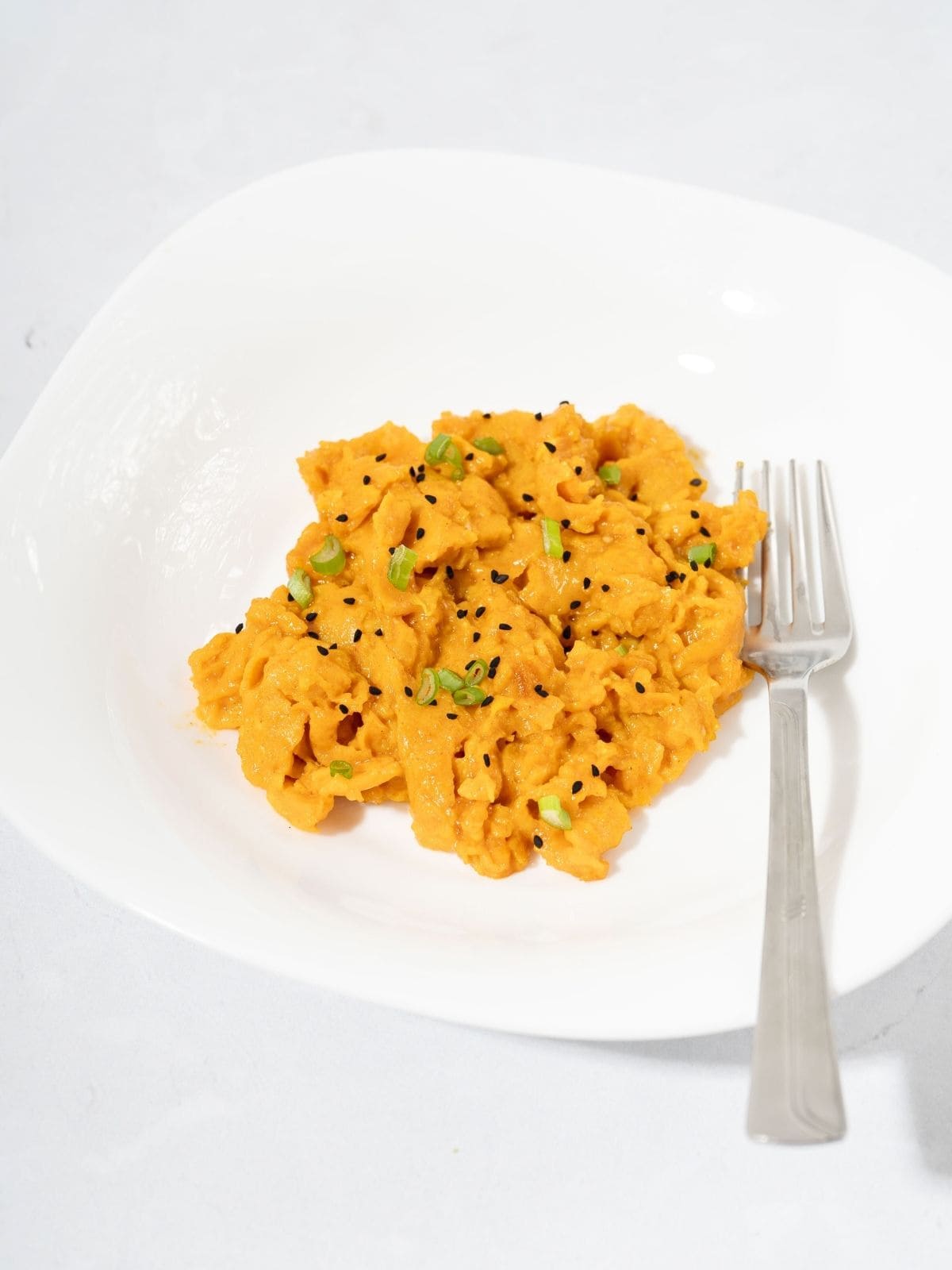
🌶️ Other Recipes Using Gochujang
🙋 Frequently Asked Questions
Pretty much, yes. Gochujang can be used as a condiment or seasoning for various dishes, including marinades, stir-fries, sauces, dressings, and more; it adds a spicy and sweet flavor to any dish.
While gochujang is the star ingredient in this recipe, you can substitute it with other types of hot sauce or chili paste if necessary - just keep in mind that the flavors and amount needed will vary depending on what you use.
Gochujang is a fermented chili paste made with red chili peppers, glutinous rice, fermented soybeans, and salt. Its unique spicy-sweet flavor with a fermented undertone are what set it apart from other types of hot sauce or chili paste.
Gochujang is a staple ingredient in Korean cuisine, adding a unique depth of flavor to dishes, and but it's also been known to have various health benefits due to its fermentation process. It contains probiotics, antioxidants, and vitamins, which is only part of the reason it's been used for centuries as a seasoning, marinade, and condiment in various Korean food, adding a spicy and sweet kick that pairs well with various different ingredients.
📖 Recipe

Single-Serve Gochujang Eggs (in 10 Minutes)
Equipment
- non-stick pan
Ingredients
- 2 large eggs
- ½ tablespoon gochujang Korean hot pepper paste
- ½ tablespoon vegetable oil or butter
- ¼ teaspoon salt
Instructions
- In a medium bowl, crack the eggs and add the salt. Whisk together until the eggs are well beaten and a bit frothy.
- Heat the vegetable oil or butter in a non-stick skillet over medium heat. Once the oil is hot or the butter is melted and foamy, reduce the heat to low and add the gochujang. Stir it around quickly for about 30 seconds to a minute, just until it becomes fragrant but not burnt.
- Pour the beaten eggs into the skillet with the gochujang. Let them sit undisturbed for about 20 seconds, then start gently stirring with a spatula. Continue to cook, stirring frequently, until the eggs are fully cooked but still soft and slightly runny in places, about 2-3 minutes for scrambled eggs.If you prefer fried eggs and haven't scrabled them ahea dof time, let them cook until the whites are set and the yolks are done to your liking, flipping if desired for over-easy or over-hard eggs.
- Once the eggs are cooked to your preference, remove from the heat immediately to avoid overcooking. Serve the eggs hot, garnished with sliced green onions and sesame seeds if you like.

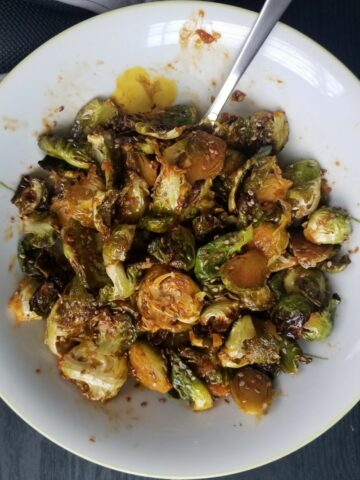
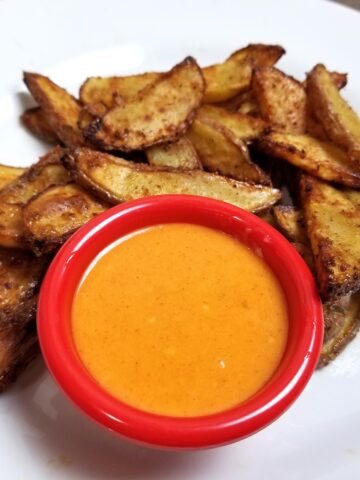
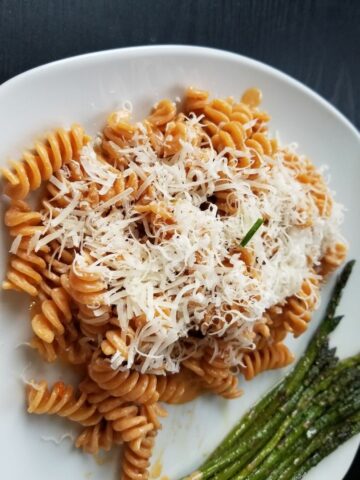
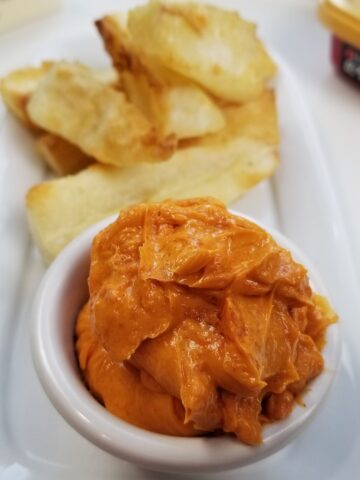

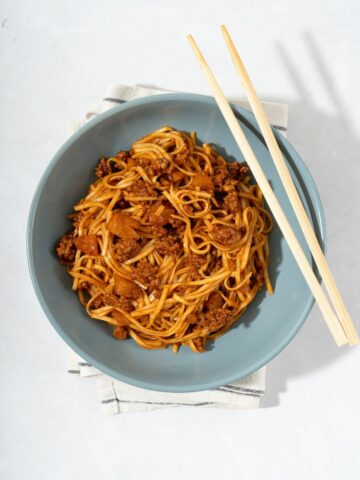

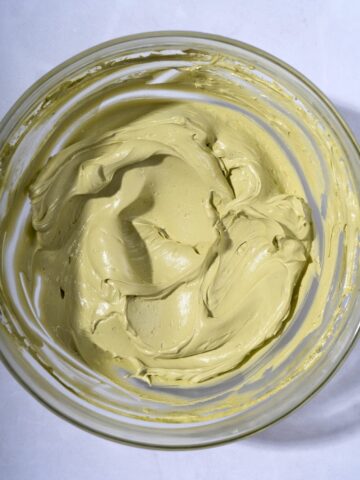
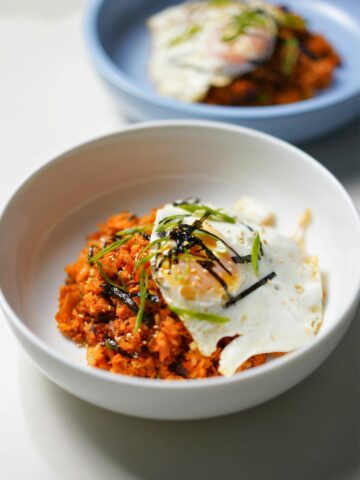
Comments
No Comments